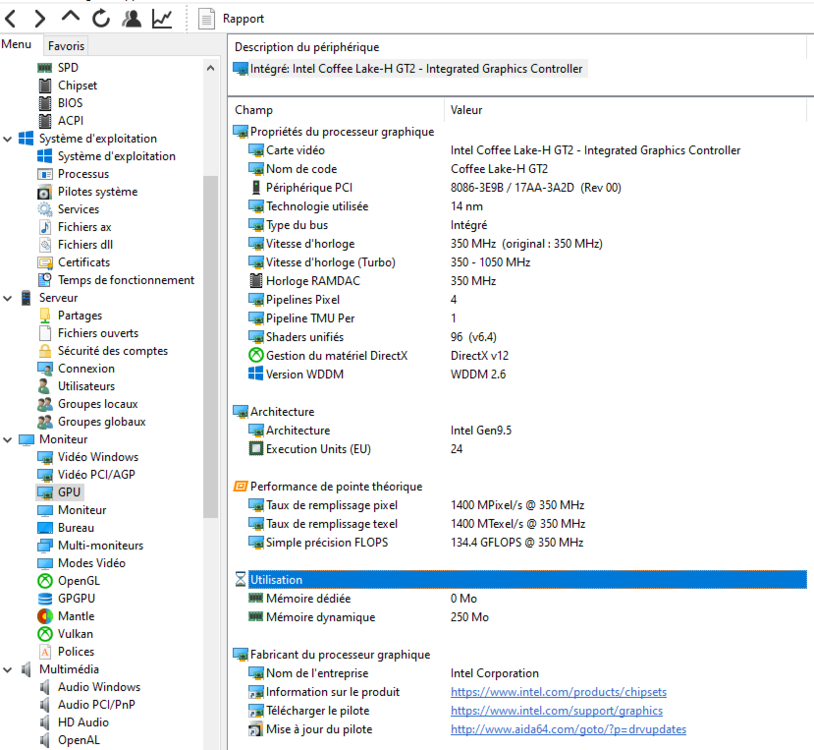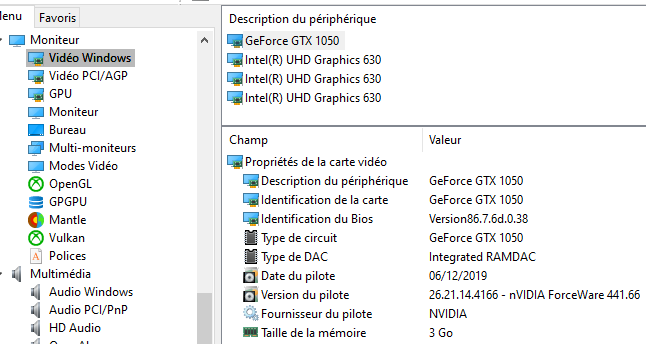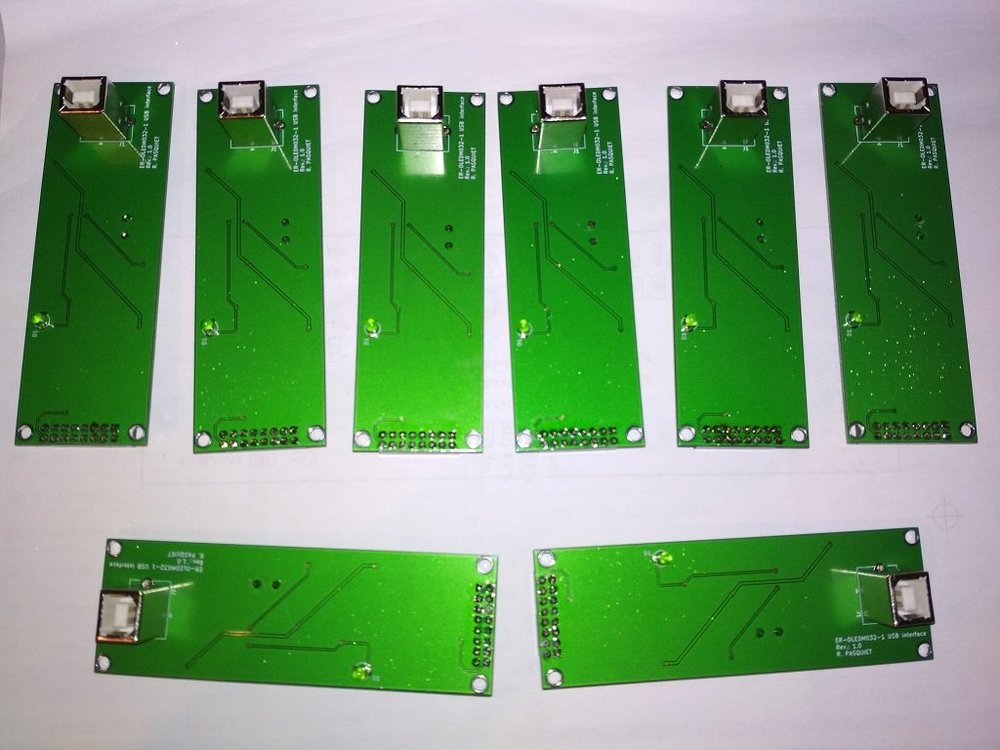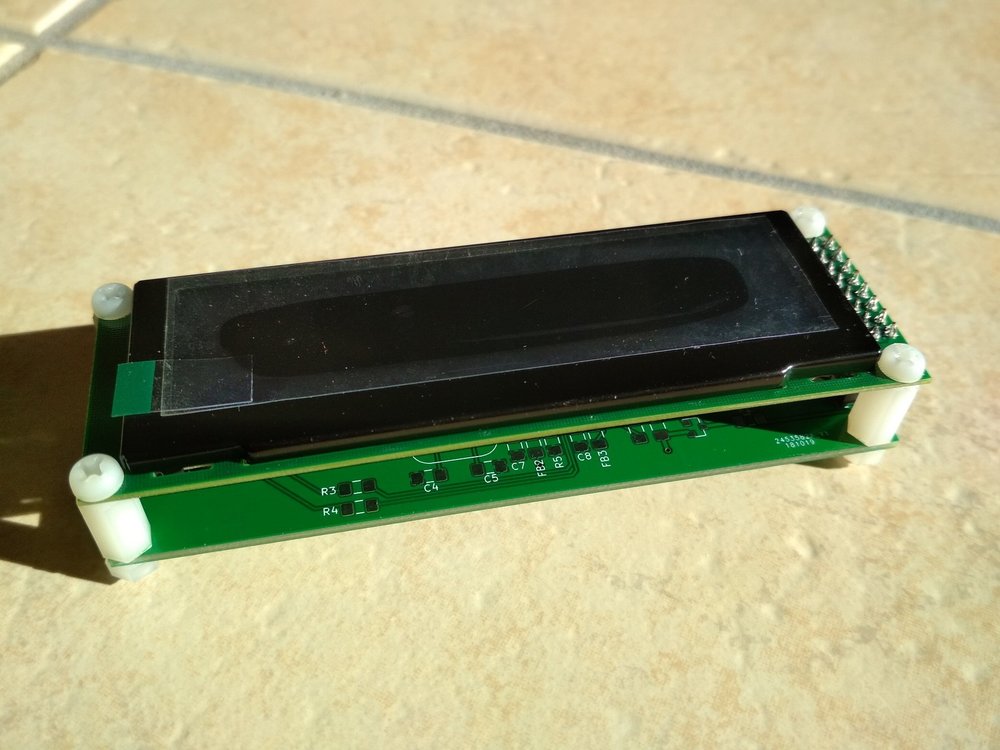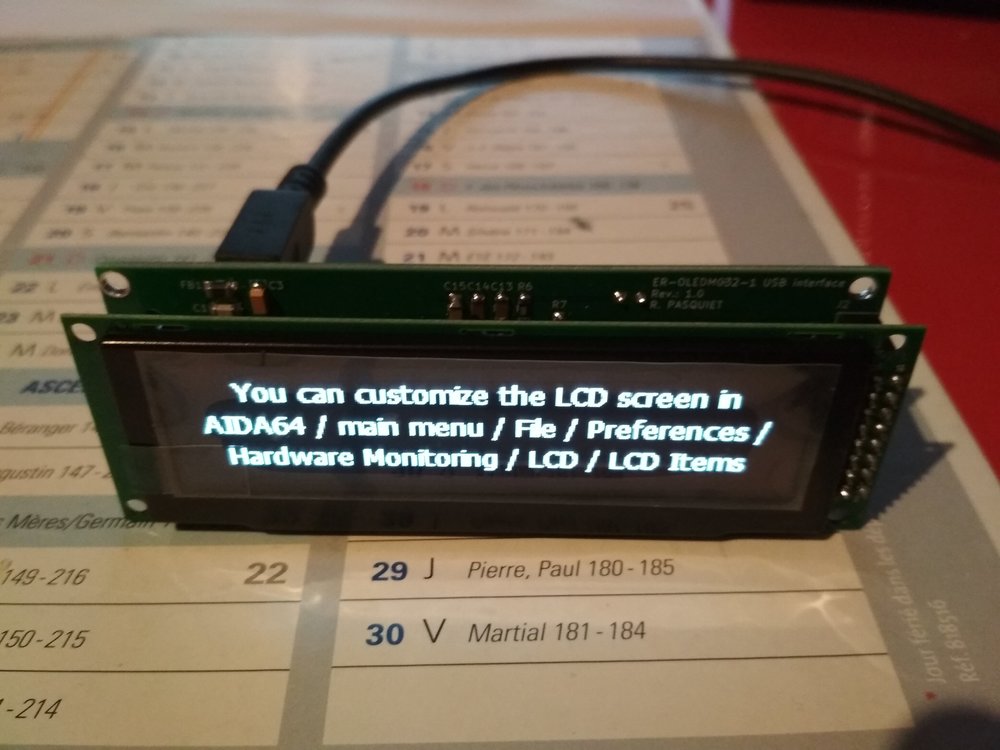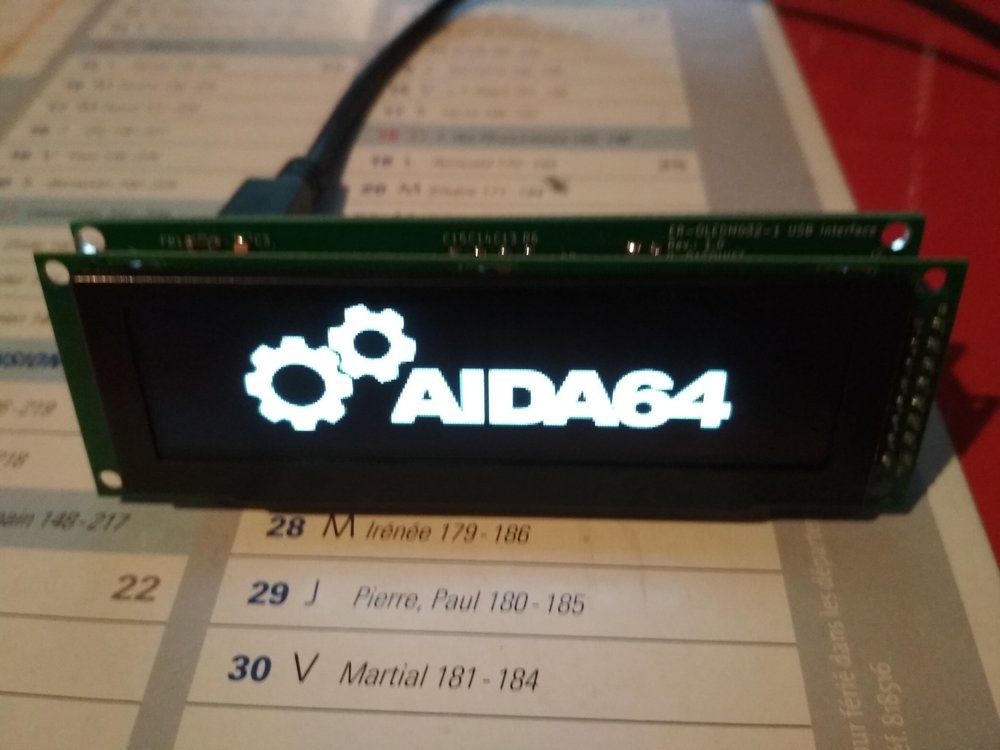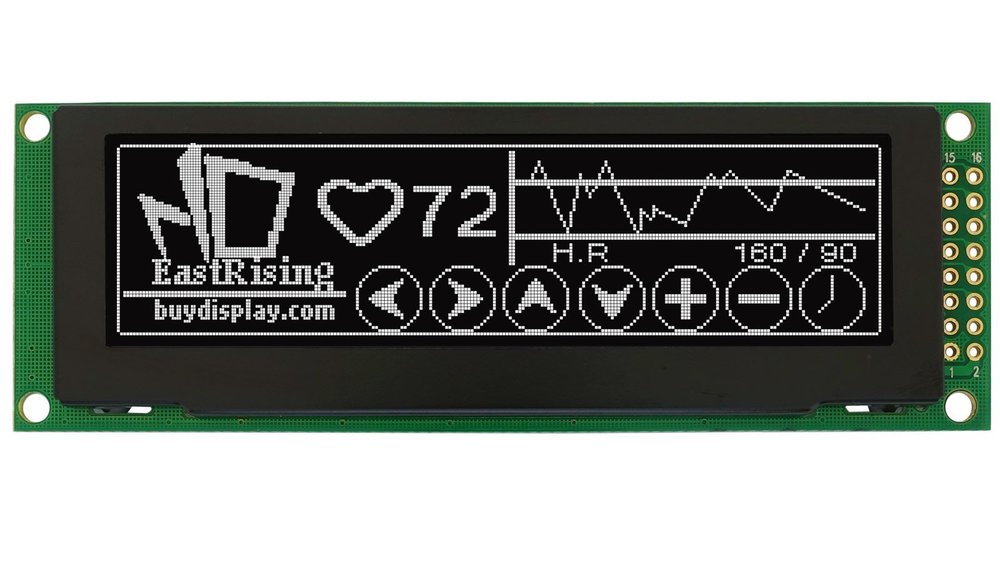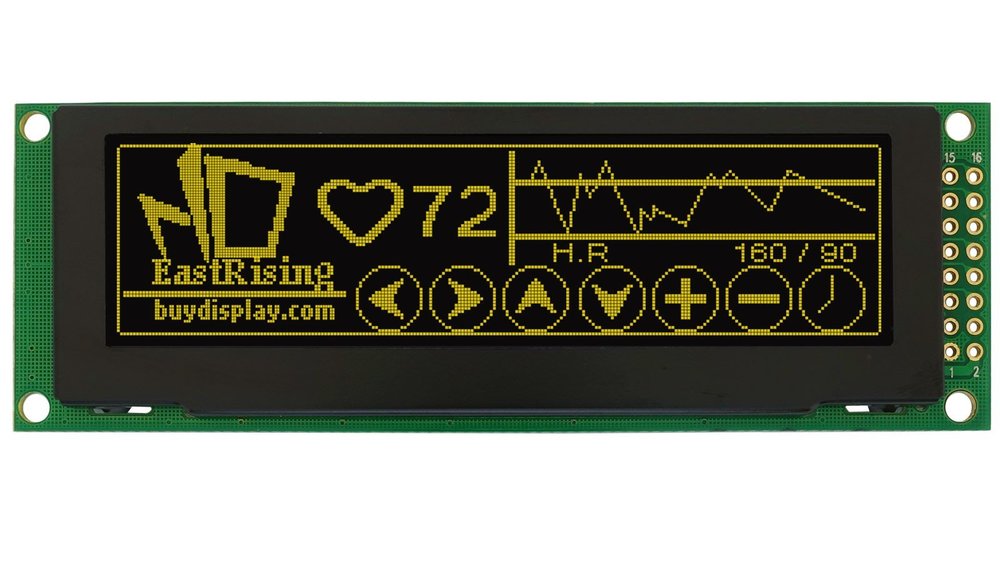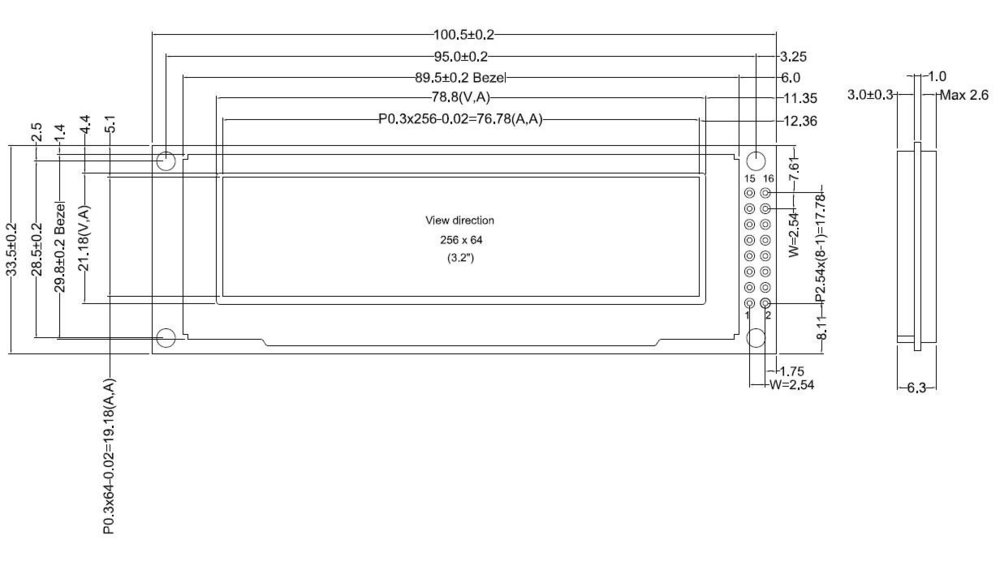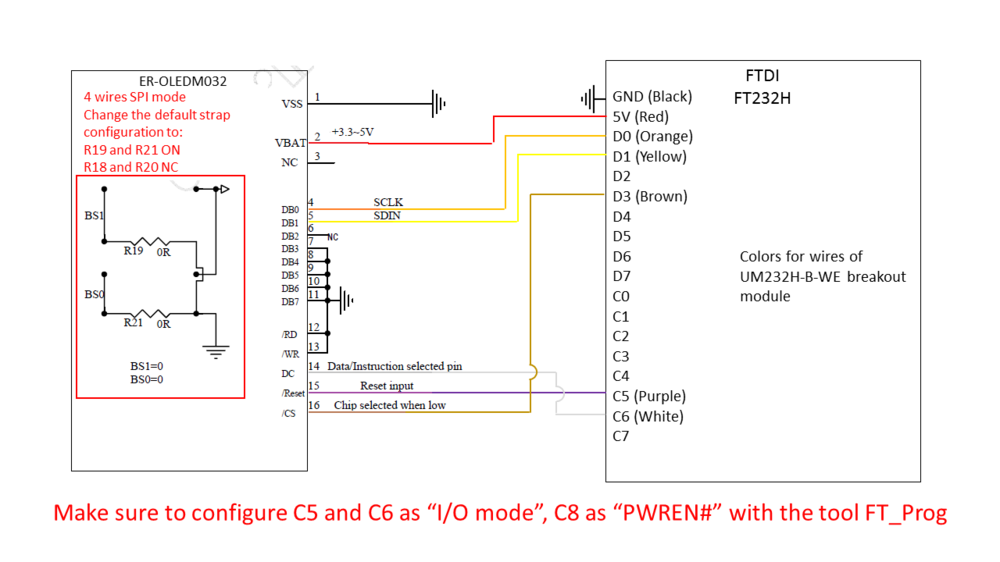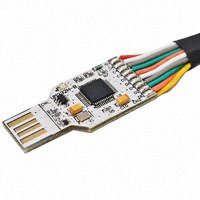
romP44
Members-
Posts
42 -
Joined
-
Last visited
-
Days Won
2
Content Type
Profiles
Forums
Events
Everything posted by romP44
-
[Sold] ER-OLEDM032 (SSD1322) 3.2" OLED USB interface
romP44 replied to romP44's topic in Hardware monitoring
Hi all, I'm back on this forum 1 year and a half... I see some people would be interested by a new batch. Please, can you confirm it? Anybody else? -
Works, thanks !
-
[Sold] ER-OLEDM032 (SSD1322) 3.2" OLED USB interface
romP44 replied to romP44's topic in Hardware monitoring
Nice ! -
Hello, I have a Lenovo L340 laptop with Nvidia GTX1050. Unfortunately, I can't see GPU usage of the Nvidia GPU. I can see only embedded Intel GPU: But card is detected in another menu:
-
[Sold] ER-OLEDM032 (SSD1322) 3.2" OLED USB interface
romP44 replied to romP44's topic in Hardware monitoring
Sold out! -
[Sold] ER-OLEDM032 (SSD1322) 3.2" OLED USB interface
romP44 replied to romP44's topic in Hardware monitoring
2 PCBs left! -
[Sold] ER-OLEDM032 (SSD1322) 3.2" OLED USB interface
romP44 replied to romP44's topic in Hardware monitoring
3 PCBs left! -
[Sold] ER-OLEDM032 (SSD1322) 3.2" OLED USB interface
romP44 replied to romP44's topic in Hardware monitoring
6 PCBs left ! -
[Sold] ER-OLEDM032 (SSD1322) 3.2" OLED USB interface
romP44 replied to romP44's topic in Hardware monitoring
Replied -
[Sold] ER-OLEDM032 (SSD1322) 3.2" OLED USB interface
romP44 replied to romP44's topic in Hardware monitoring
PCBs are still available! -
[Sold] ER-OLEDM032 (SSD1322) 3.2" OLED USB interface
romP44 replied to romP44's topic in Hardware monitoring
Special offer ! Price per unit without OLED screen: 26,68€ 20€ (without shipping) Price per unit with OLED screen: 55,55€ 45€ (without shipping) -
[Sold] ER-OLEDM032 (SSD1322) 3.2" OLED USB interface
romP44 replied to romP44's topic in Hardware monitoring
UP ! -
[Sold] ER-OLEDM032 (SSD1322) 3.2" OLED USB interface
romP44 replied to romP44's topic in Hardware monitoring
I agree. -
[Sold] ER-OLEDM032 (SSD1322) 3.2" OLED USB interface
romP44 replied to romP44's topic in Hardware monitoring
Yes it is -
[Sold] ER-OLEDM032 (SSD1322) 3.2" OLED USB interface
romP44 replied to romP44's topic in Hardware monitoring
8 interfaces are available! All were tested: Price per unit (without OLED screen): 26,68€ (without shipping) If you want, I can provide you interface + OLED display assembled: Price per unit (with OLED screen): 55,55€ (without shipping) As described in my first post, 4 OLED colors are available : white, blue, green and yellow. Payement by Paypal. See you, Romain -
[Sold] ER-OLEDM032 (SSD1322) 3.2" OLED USB interface
romP44 replied to romP44's topic in Hardware monitoring
-
[Sold] ER-OLEDM032 (SSD1322) 3.2" OLED USB interface
romP44 replied to romP44's topic in Hardware monitoring
-
[Sold] ER-OLEDM032 (SSD1322) 3.2" OLED USB interface
romP44 replied to romP44's topic in Hardware monitoring
I bought displays here. It's 27.15$ including header pins without shipping. PCB, components soldered, tested including screws will cost about 27€ without shipping. -
[Sold] ER-OLEDM032 (SSD1322) 3.2" OLED USB interface
romP44 replied to romP44's topic in Hardware monitoring
The breakout module UM232H-B-WE works very well and was perfect for testing purpose, but now it's time to have something more professional. I started to design a PCB to replace the UM232H-B-WE breakout module, still based on chip FT232H. PCB size will be same as the display and directly plug on the 16 pins connector. Fixing holes are same as the display. It will have a USB type B connector. Side connected to the OLED display: Side with USB connector (connector not displayed on the rendering): Here is the schematic: Schematic ER-OLED032-1 USB interface v1.0.pdf Please note that this schematic is not tested yet! I ordered 10 PCBs and components. I'm waiting the delivery. 2 samples will be for Fiery for future tests with Aida64. If test is successful, I will certainly sell remaining 8 samples. I will update this page during construction of samples and testing. -
Hi! Last year, I was looking for a display to show different information on my home theather computer. I wanted a display to fit in a 5" 1/4 bay and no LCD technology as I don't want backlight that lights all my room when I watch a movie (high contrast required). Then I discovered the 3.2" monochrome OLED display ER-OLEDM032 based on SSD1322 chip. Support in Aida64 was implemented by Fiery. It looks great! Infinite contrast of OLED technology is perfect. 4 different models exist for 4 different colours. Blue: Green: White (what I chose): And yellow: Dimensions: 4 protocols are available. Protocol to be used is set using bridges on the display PCB. 6800 8-bit parallel 8080 8-bit parallel 3 wires SPI 4 wires SPI 6800 and 8080 are obsolete as we don't use anymore parallel port. I chose 4 wires SPI rather than 3 wires SPI because communication speed is a bit higher. To convert USB to 4 wires SPI, I used a FTDI UM232H-B-WE breakout module based on chip FT232H. Here is the schematic of connections between USB breakout module and OLED display:
-
Yes I have the same issue with video and audio files. It was working 1st time I tried, but I don't remember with which build it was.
-
I have BS Player 2.70 and AIDA64 Beta 5.80.4084. Same issue with build 4079c.
-
Hello, In the last beta build (4081), it seems that the sensor to get file name played in BS Player is not working anymore. It's always "Unknown". Elapsed time and status are OK. It's working with Winamp. Thanks,
-
For VLC, it is possible to get info by HTTP. First , in the option of VLC, Web interface must be activated. Then in a web browser, it's possible to get info from VLC at this address : http://localhost:8080/requests/status.xml Example of answer: <?xml version="1.0" encoding="utf-8" standalone="yes" ?> <root> <fullscreen>0</fullscreen> <audiodelay>0</audiodelay> <apiversion>3</apiversion> <currentplid>4</currentplid> <time>6</time> <volume>289</volume> <length>21374</length> <random>true</random> <audiofilters> <filter_0></filter_0></audiofilters> <rate>1</rate> <videoeffects> <hue>0</hue> <saturation>1</saturation> <contrast>1</contrast> <brightness>1</brightness> <gamma>1</gamma></videoeffects> <state>playing</state> <loop>false</loop> <version>2.2.4 Weatherwax</version> <position>0.0003166749374941</position> <repeat>false</repeat> <subtitledelay>0</subtitledelay> <equalizer></equalizer><information> <category name="meta"> <info name='filename'>halloween eq.mp3</info> </category> <category name='Flux 0'><info name='Canaux '>Mono</info><info name='Fréquence d'échantillonnage'>44100 Hz</info><info name='Type '>Audio</info><info name='Débit '>128 kbit/s</info><info name='Codec '>MPEG Audio layer 1/2 (mpga)</info></category> </information> <stats> <lostabuffers>0</lostabuffers> <readpackets>104</readpackets> <lostpictures>0</lostpictures> <demuxreadbytes>105324</demuxreadbytes> <demuxbitrate>0.016014367341995</demuxbitrate> <playedabuffers>251</playedabuffers> <demuxcorrupted>0</demuxcorrupted> <sendbitrate>0</sendbitrate> <sentbytes>0</sentbytes> <displayedpictures>0</displayedpictures> <demuxreadpackets>0</demuxreadpackets> <sentpackets>0</sentpackets> <inputbitrate>0.016173057258129</inputbitrate> <demuxdiscontinuity>0</demuxdiscontinuity> <averagedemuxbitrate>0</averagedemuxbitrate> <decodedvideo>0</decodedvideo> <averageinputbitrate>0</averageinputbitrate> <readbytes>105884</readbytes> <decodedaudio>251</decodedaudio> </stats> </root> More info : https://wiki.videolan.org/VLC_HTTP_requests/ https://wiki.videolan.org/documentation:modules/http_intf/ It seems there are other ways to communicate with VLC: https://wiki.videolan.org/Control_VLC_instance/

